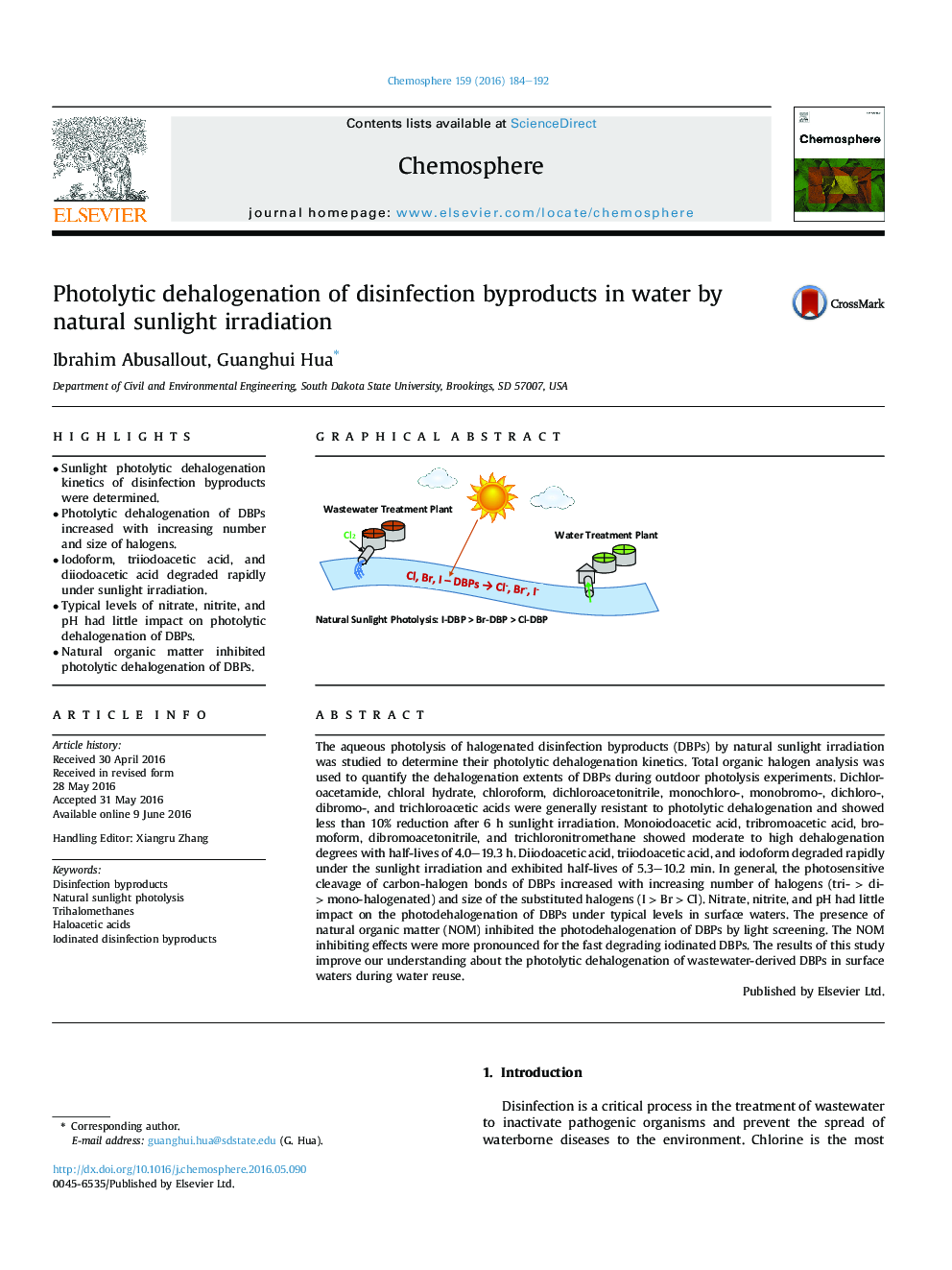| کد مقاله | کد نشریه | سال انتشار | مقاله انگلیسی | نسخه تمام متن |
|---|---|---|---|---|
| 4407461 | 1618812 | 2016 | 9 صفحه PDF | دانلود رایگان |
• Sunlight photolytic dehalogenation kinetics of disinfection byproducts were determined.
• Photolytic dehalogenation of DBPs increased with increasing number and size of halogens.
• Iodoform, triiodoacetic acid, and diiodoacetic acid degraded rapidly under sunlight irradiation.
• Typical levels of nitrate, nitrite, and pH had little impact on photolytic dehalogenation of DBPs.
• Natural organic matter inhibited photolytic dehalogenation of DBPs.
The aqueous photolysis of halogenated disinfection byproducts (DBPs) by natural sunlight irradiation was studied to determine their photolytic dehalogenation kinetics. Total organic halogen analysis was used to quantify the dehalogenation extents of DBPs during outdoor photolysis experiments. Dichloroacetamide, chloral hydrate, chloroform, dichloroacetonitrile, monochloro-, monobromo-, dichloro-, dibromo-, and trichloroacetic acids were generally resistant to photolytic dehalogenation and showed less than 10% reduction after 6 h sunlight irradiation. Monoiodoacetic acid, tribromoacetic acid, bromoform, dibromoacetonitrile, and trichloronitromethane showed moderate to high dehalogenation degrees with half-lives of 4.0–19.3 h. Diiodoacetic acid, triiodoacetic acid, and iodoform degraded rapidly under the sunlight irradiation and exhibited half-lives of 5.3–10.2 min. In general, the photosensitive cleavage of carbon-halogen bonds of DBPs increased with increasing number of halogens (tri- > di- > mono-halogenated) and size of the substituted halogens (I > Br > Cl). Nitrate, nitrite, and pH had little impact on the photodehalogenation of DBPs under typical levels in surface waters. The presence of natural organic matter (NOM) inhibited the photodehalogenation of DBPs by light screening. The NOM inhibiting effects were more pronounced for the fast degrading iodinated DBPs. The results of this study improve our understanding about the photolytic dehalogenation of wastewater-derived DBPs in surface waters during water reuse.
Figure optionsDownload as PowerPoint slide
Journal: Chemosphere - Volume 159, September 2016, Pages 184–192
